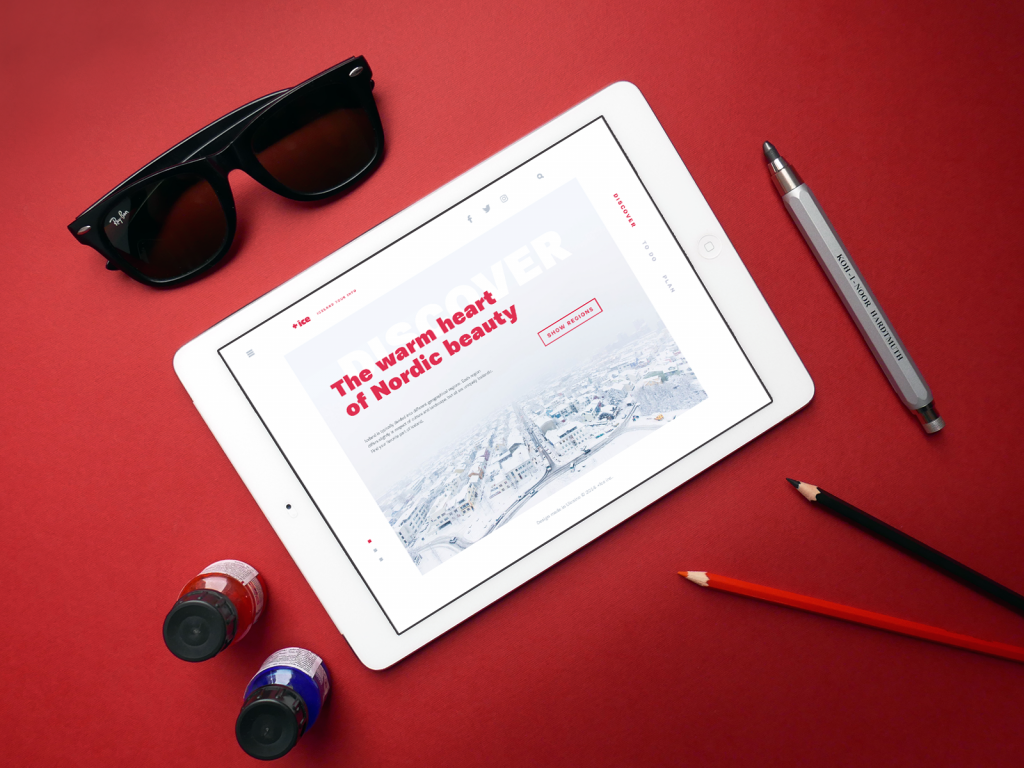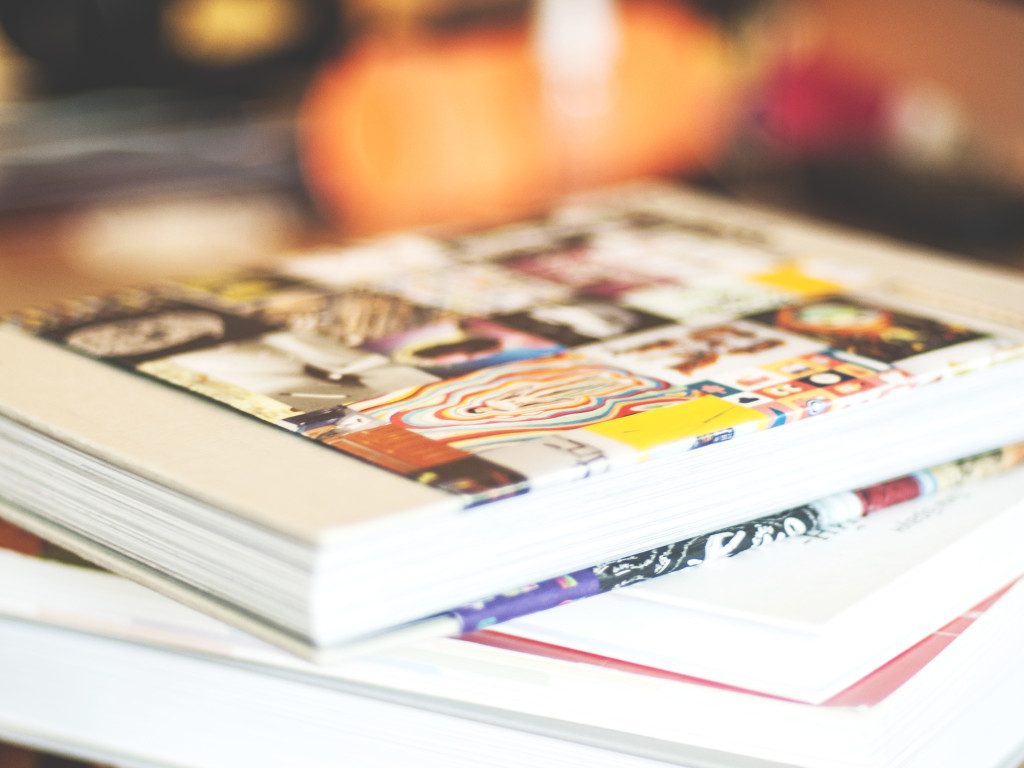Creating high-quality content for the digital product is an issue of the same importance as thought-out design and careful bugless development. Copy is what makes the design even more powerful breathing deeper life and sense into the webpage or app screen. Copy is information. And information, as it is known well, is the tool of incredible diversity and the key to many doors.
William G. Pollard once wrote: “Information is a source of learning. But unless it is organized, processed, and available to the right people in a format for decision making, it is a burden, not a benefit.” Working with copy content for digital products, writers get even closer to the issue, as the texts they usually write are aimed at supporting the goals set behind a particular product, mostly solving problems or improving lives. Good copy strengthens design significantly, poor copy is able to kill great design solutions and hours spent creating code for the app or website.
One of our previous articles here in Tubik Blog was devoted to the topic of copywriting for UI. Today we would like to continue this theme with a set of practical and useful tips on writing from famous and recognized authors. They performed successfully in different genres of literature, mostly fiction; still, many tips they give generally about the organization of the writing process, creative approaches, and self-critique are applicable and useful for copy content of all kinds. Let’s review the first set and chalk them up for creating a high-quality and user-friendly copy.

You can’t wait for inspiration. You have to go after it with a club. (Jack London)
In one of our articles with tips for designers, we have already unveiled this aspect of the creative job, and the ideas which were offered are also fair for writers, especially those who are working within particular tasks and products rather than in free creative flow. Creative people often say that they cannot work without necessary inspiration: they are just waiting for the muse which will help them to find the best solution. Like it or hate it, but muse which doesn’t arrive on time is not the reasonable explanation for broken deadlines or inappropriate results. Therefore, if you want to have a serious name and get respected by the clients, if you set the goal to have a constant flow of projects and earn more and more, find ways to call your muse when you need it, not waiting when it wants to come. By the way, the process of research and writing drafts is one of the great ways. Appetite comes with eating, and the muse comes with working.
Write drunk, edit sober. (Ernest Hemingway)
That is another absolute truth for writers of any kind. Certainly, drunk is not meant literally here; still, any writer knows that feeling of being a bit besotted by the idea under the writing. When you caught the necessary state and vibe, you often see and feel the whole piece of writing in your mind and will wish not to stop until the last line is dropped on paper or screen. That’s the stage of pure creativity, and it would be a big mistake to interrupt it: don’t hesitate, get dip into the process and write until the last full stop is reached. Still, never ever show the result to the public: always take time to review and edit with a sober and concentrated mind. This will let you see the small mistakes, misprints, duplication, poorly structured sentences, and phrases. This will enable you to provide your reader with high-quality, well-structured copy, which is the highest form of respect. So, in other words, write with a hot heart, but edit with a cold head.
The first draft of everything is shit. (Ernest Hemingway)
One more rule by Hemingway clearly echoes the previous tip. Always take the draft as just a draft. Any piece of writing needs revision, not only in the aspect of minor errors or technical alterations but also in reviewing the text thoughtfully after the first wave of inspiration has washed away and common sense comes into play. The review allows for enhancing the initial idea with analysis, enables one to feel the integrity and unity of general performance, estimate the appropriateness of stylistic elements and hierarchy of the elements, etc.
The main rule of writing is that if you do it with enough assurance and confidence, you’re allowed to do whatever you like… So write your story as it needs to be written. Write it honestly, and tell it as best you can. I’m not sure that there are any other rules. Not ones that matter. (Neil Gaiman)
It’s quite easy to imagine this state of things for fiction writers, who mostly choose the theme and genre by themselves, but there will be many people saying that it’s impossible for copywriters: they write what they are told to write. Still, in this sphere, the impact of sincerity and creative passion hasn’t been canceled. Certainly, a great professional master will create copy for sometimes highly diverse themes: the trick is that, in most cases, this amazing proficiency level will be supported by the writer’s natural diversity and curiosity as well as broad outlook. People knowing a lot, with lively and constantly learning minds, are able to get sincerely inspired by various issues and tasks. The best bloggers and copywriters are the ones who write on topics they really believe in and have something to share – in this case, they have the great courage to write honestly and feel what the readers need to get from them. Finding your themes and strengthening in them has a huge benefit of getting tasks and being paid for writing on topics you really feel yours.

Always carry a note-book. And I mean always. The short-term memory only retains information for three minutes; unless it is committed to paper you can lose an idea for ever. (Will Self)
Certainly, in present-day reality notebook can get transformed into a laptop, a tablet, or a simple app for taking notes on a mobile phone – it doesn’t matter. What does matter is being able to take a note any moment a fresh thought important to remember comes to mind. Sometimes it happens you come up with a brilliant solution or word combination, the brand name or great headline being far from your workplace, and that is not the reason to lose it. As well as it doesn’t mean you should stop anything you’re doing if a good thought on work issues occurs to you suddenly. A small note, a couple of words taken down anywhere, will really help. They will save the thought and will set the small tag to enable the writer to pull it out and use it at the moment when it’s convenient. Many writers know this small secret is an effective step to creative productivity.
Always be a poet, even in prose. (Charles Baudelaire)
The tip can seem a bit unrealistic for non-fiction writing. However, it definitely works. Words are a great tool for transforming not only sense and information but also voice, tone, and mood. One of the big mistakes in copywriting is thinking that it doesn’t present such a wide field of expressiveness and imagery as writing fiction or big publicist works. Vise versa: in the vast majority of cases, copywriting requires high and intensive creative word processing as texts are mostly concise and restricted with many limitations and still, they need to inform users, create necessary moods, transform information, and often – persuade or touch some sensitive layers of perception. Lots of mechanisms and methods used by fiction writers and poets can be applied in copywriting: synonyms, idioms, metaphors and metonymies, alliterations and assonance, hyperbolas and litotes, anaphoras and epiphoras added thoughtfully and properly to the copy let it reveal new shades of the textual content. They can make the copy more creative, more vivid, more human-like, and original. Furthermore, they enable the author to set a unique style of writing that will get recognizable, which is in particular need for those who create quite big texts for websites and blogs, advertising materials, or presentations. Being a poet means adding an original creative spark to what is written.

When you can’t create, you can work. (Henry Miller)
Copywriting is not only creativity. It is also analysis and learning, obtaining knowledge about an object and spheres the copy is created about, researching and testing the created copy, editing, and proofreading. There is always plenty of work, even for the moments when you do not feel yourself flying on the strong wings of inspiration. One more thing to mention: creativity gets stronger with practice. If your mood today is not creative, then set practical tasks for yourself and make your skills better for the moment your muse comes to help you.
You can fix anything but a blank page. (Nora Roberts)
In creative work, sometimes the only thing which is needed is taking the first step. Have you ever experienced the moment at an exam or test when you see the task and feel the surge of panic: “I know nothing about that! That’s a total failure! Nothing to say! No single word!” and then after a minute or two, getting calmer and colder, you bring out the best of your potential and give the good answer? Supposedly, many people went through that. And this is part of the creative routine, in particular working with the copy, which can go through a variety of stages, from “I don’t know anything on this topic” to “There are tons of texts on that, how can I create something unique and original…”. The secret is simple: start writing. Any result of the process will stimulate your creative force. Perhaps, you will create something horrible that will obviously need rewriting, and that will be the result also: you will know what is definitely inappropriate for this task and feel how to fix it. Just turn the key with the first line to start the ignition.
Writers do not merely reflect and interpret life, they inform and shape life. (E. B. White)
This is particularly true for copywriters. In most cases, they don’t have the luxury just to reflect the life as well as their own thoughts and feelings. Their key professional aim is to inform people, sometimes to educate and give instructions, guide and help, solve problems and persuade, shape values and stimulate opinions. This is not a set of pathetic expressions; this is a real ground for the great responsibility a copywriter bears every day. Considering it and forming a professional approach with deep respect for the readers provides a useful and thoughtful copy.

Do not … address your readers as though they were gathered together in a stadium. When people read your copy, they are alone. Pretend you are writing to each of them a letter on behalf of your client. (David Ogilvy)
This secret from the guru of copywriting has survived through several epochs of information and technology revolutions without any slight change. Readers still are keen to read something which they feel helpful and sincere, which appeals to them and brings a pinch or loads of actual usefulness or enjoyment. As well as they do feel hypocrisy and a purely technical approach to creating texts.
On the average, five times as many people read the headline as read the body copy. When you have written your headline, you have spent eighty cents out of your dollar. (David Ogilvy)
The principles of the visual hierarchy have set strong rules for writers, journalists, and editors for many decades, being transformed and revised for copy content created for digital products. It’s vital to remember: the text on a webpage or screen should be easily scannable and skimmable. And the first thing scanned by users is headlines. They need as much (if not more!) attention as the rest of the copy. No wonder: in most cases, a headline is a crucial element of making the decision; it stimulates the reader to spend more precious minutes on further reading and creates first vibes of tone and style.

If you’re trying to persuade people to do something, or buy something, it seems to me you should use their language, the language they use every day, the language in which they think. (David Ogilvy)
Writing for readers, know your readers. Using inappropriate style and language is able to destroy the chances of creating text that will get target readers interested and wish to read more. Surely, that doesn’t mean going to oversimplification and making your copy primitive aka clear for everyone. It means keeping the balance and making the text you create natural, first of all, for the core target audience. So, the definition and research of target readers is an important part of the copywriting routine, preferably in the pre-writing stage of working out a particular task.
If you want to be a writer, you must do two things above all others: read a lot and write a lot. (Stephen King)
It’s not a secret that practice makes perfect. Reading a lot, you get passive practice; writing a lot, you level up your active writing skills. Both are crucially important for broadening professional horizons and setting up creative sails for every wind.

Use the time of a total stranger in such a way that he or she will not feel the time was wasted. (Kurt Vonnegut)
People, reading the copy you write, trust you with the most precious of their resources: their time. Consider that, respect their time and effort, make use of that time, and do it in a smart and elegant way – your readers will be grateful and happy, and you will get this respect back in professional recognition.
Recommended reading
How to Make Web Interface Readable
UX Writing: Handy Tips on Text Improving User Experience
Copywriting for Mobile and Web Interfaces: Types of UI Copy
Visual Perception: Icons vs Copy in UI
Tips on Applying Copy Content in User Interfaces
How To Design User Onboarding: Tips and Practices
Error Screens and Messages: UX Design Practices
Welcome to read the free e-book by the Tubik team Design for Business





